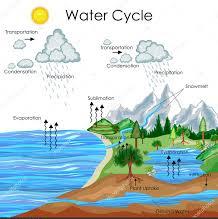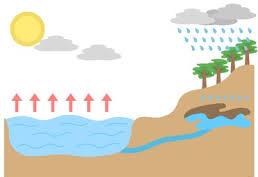INFILTRATION MEANING- AN OVERVIEW
INTRODUCTION
- Infiltration is normally defined as the downward movement/flow of water from above-ground into the subsurface. Simply it is the process by which water on the ground surface enters the soil.
- Since water entry into soil is caused by matric and gravitational forces; therefore, this entry may occur in the lateral and upward directions as well as the downward one.
- Infiltration is caused by multiple factors including; gravity, capillary forces, adsorption and osmosis. Many soil characteristics can also play a role in determining the rate at which infiltration occurs.

IMPORTANCE
- The infiltration process has great importance as it is related to irrigation, contaminant transport, groundwater recharge, and ecosystem viability.
- It is also related to surface and subsurface processes in describing the hydrologic cycle.
- The rate and pattern of infiltration vary with the distribution and rate with which water is supplied at the ground surface, the depth of the water table, the hydraulic properties of the subsurface materials, and the antecedent moisture content distribution.
INFILTRATION CAPACITY
- It is the maximum rate at which a soil is capable of absorbing water in a given condition.
- It is most often measured in meters per day but can also be measured in other units of distance over time if necessary.
- The infiltration capacity decreases as the soil moisture content of soils surface layers increases. If the precipitation rate exceeds the infiltration rate, runoff will usually occur unless there is some physical barrier.
- Infiltration rate can be measured by Infiltrometers, permeameters and rainfall simulators.

FACTORS AFFECTING INFILTRATION
- Precipitation
The amount, intensity and duration of precipitation that falls as rain or snow affect the rate of infiltration. Rainfall leads faster infiltration than any other precipitation. The more amount of precipitation occurs, the more infiltration will occur until the ground reaches saturation, at which point the infiltration capacity is reached.
When precipitation initially starts, the infiltration occurs rapidly as the soil is unsaturated, but as time continues the infiltration rate slows as the soil becomes more saturated. So the duration has also impact on the rate. Therefore, if rainfall occurs at a rate faster than the infiltration capacity runoff will occur.
- Soil characteristics
Soils having smaller pore space, such as clay, have lower infiltration capacity and slower infiltration rates than soils having large pore space, such as sands. However, when clay is present in dry conditions and thus large cracks are developed leads to higher infiltration capacity. Compaction of soils results in decreased porosity within the soils, which decreases infiltration capacity.
- Soil saturation
Saturated soil has no more capacity to hold more water, so the infiltration capacity gets stop that leads to much more surface runoff. When soil is partially saturated then infiltration can occur at a moderate rate and fully unsaturated soils have the highest infiltration capacity.
- Soil organic matter
Organic materials in the soil increase the infiltration capacity.
- Land cover
Land surface with impermeable layers such as parking lots, roads, and developments don’t allow water to infiltrate. Vegetation can slow the movement of runoff, allowing more time for it to seep into the ground. Agriculture and the tillage of land also change the infiltration patterns of a landscape.
- Slope of the land
When the slope of land is higher runoff occurs more readily which leads to lower infiltration rates than flat land surface.
- Evapotranspiration
Increased abundance of vegetation also leads to higher levels of evapotranspiration which can decrease the amount of infiltration rate.
Read also….
HYDROLOGIC CYCLE-OVERVIEW & PROCESSES
SOIL STRUCTURE-DEFINITION, FORMATION & TYPES
SOIL TEXTURE- CLASSIFICATION & INFLUENCE
SOIL PROFILE- DIFFERENT HORIZONS
WHAT IS SOIL EROSION- TYPES & MECHANISM